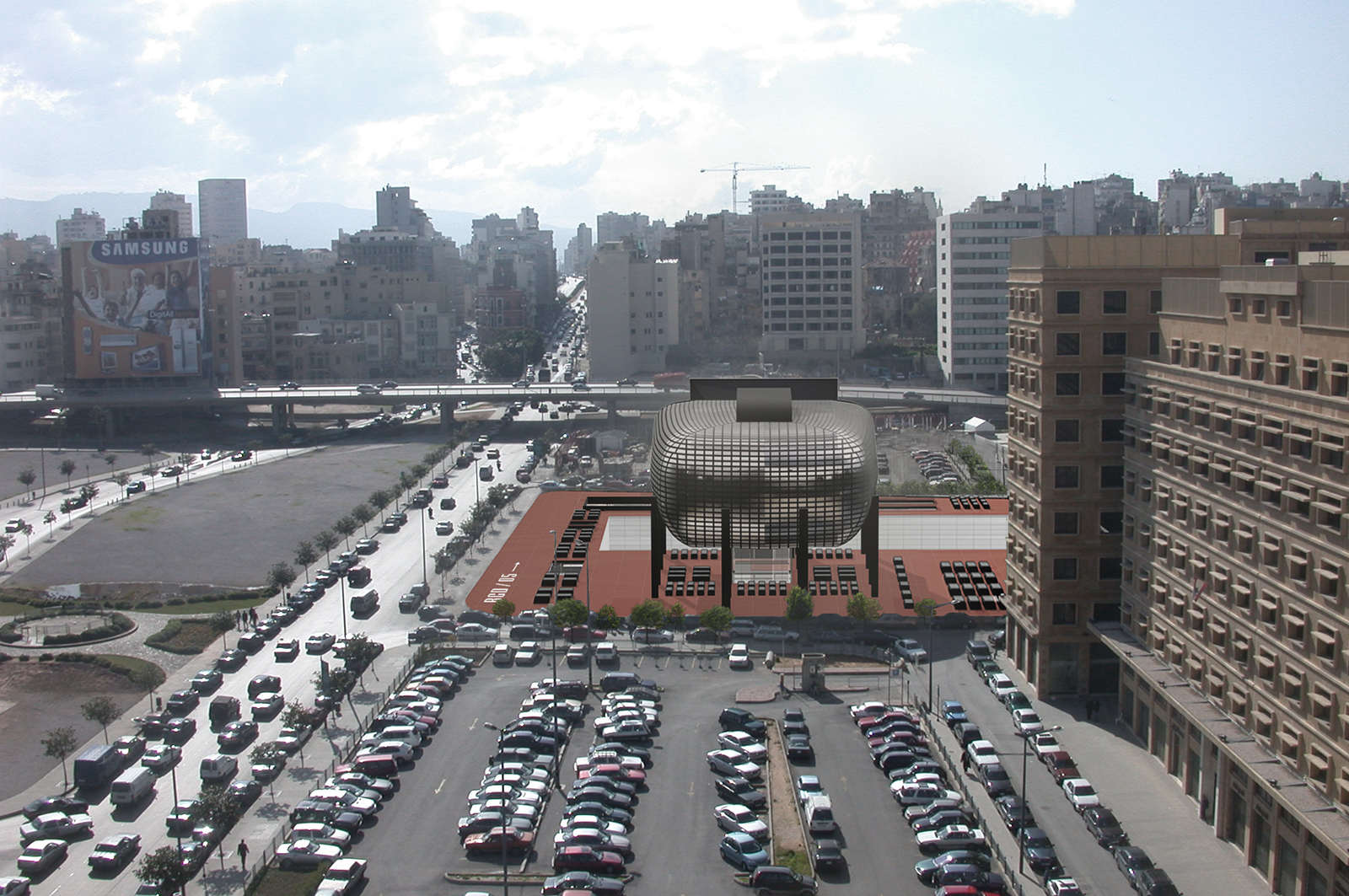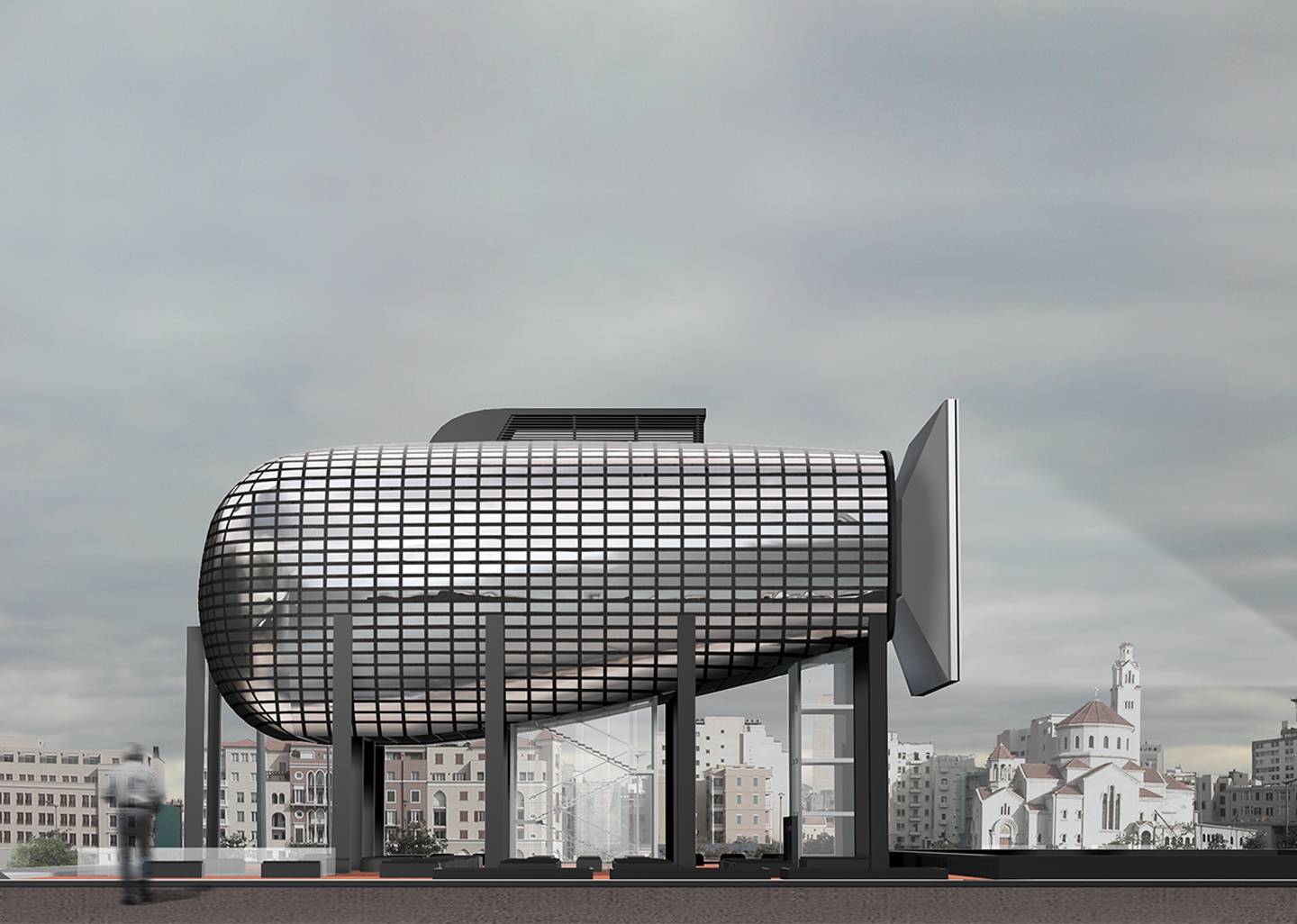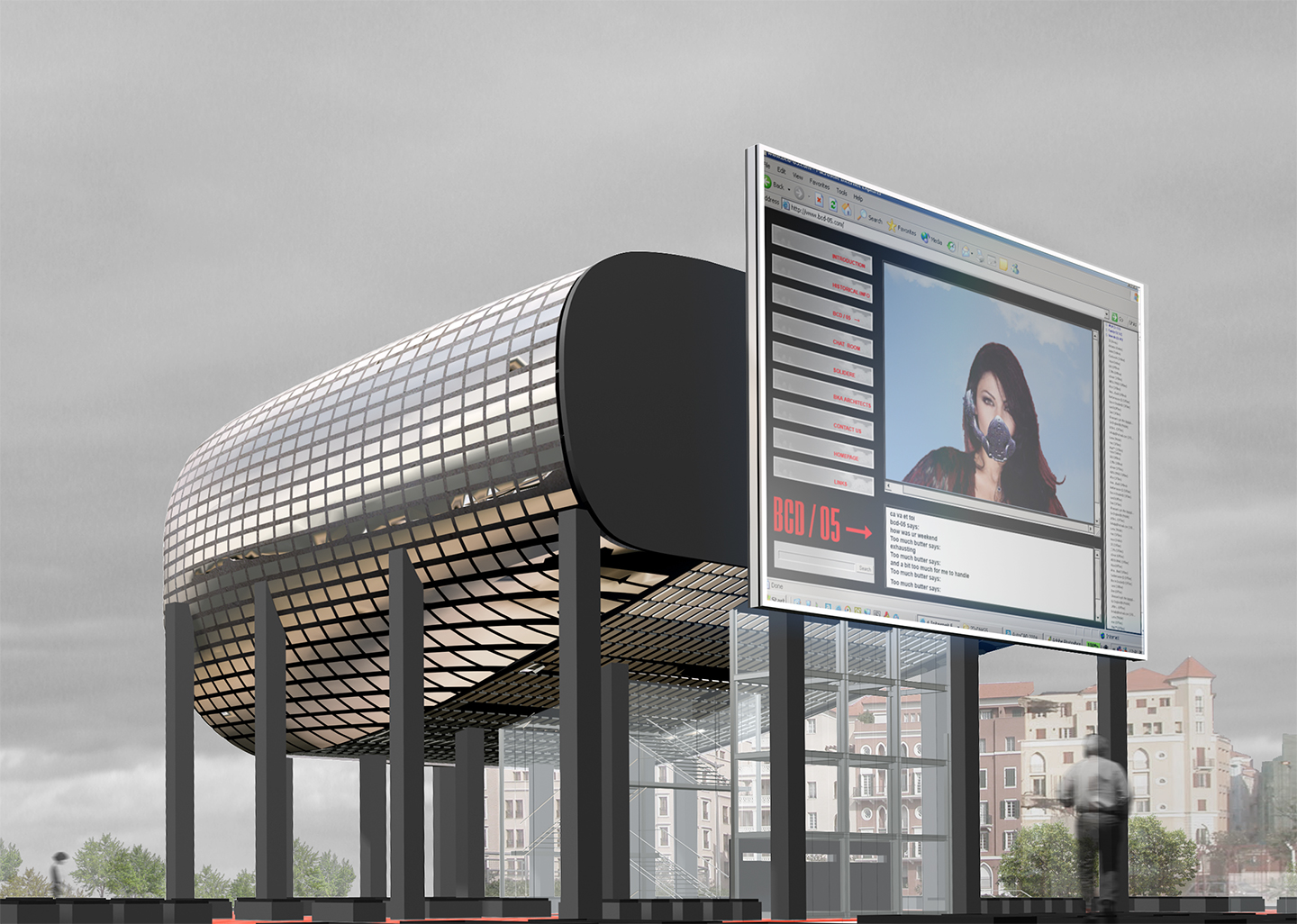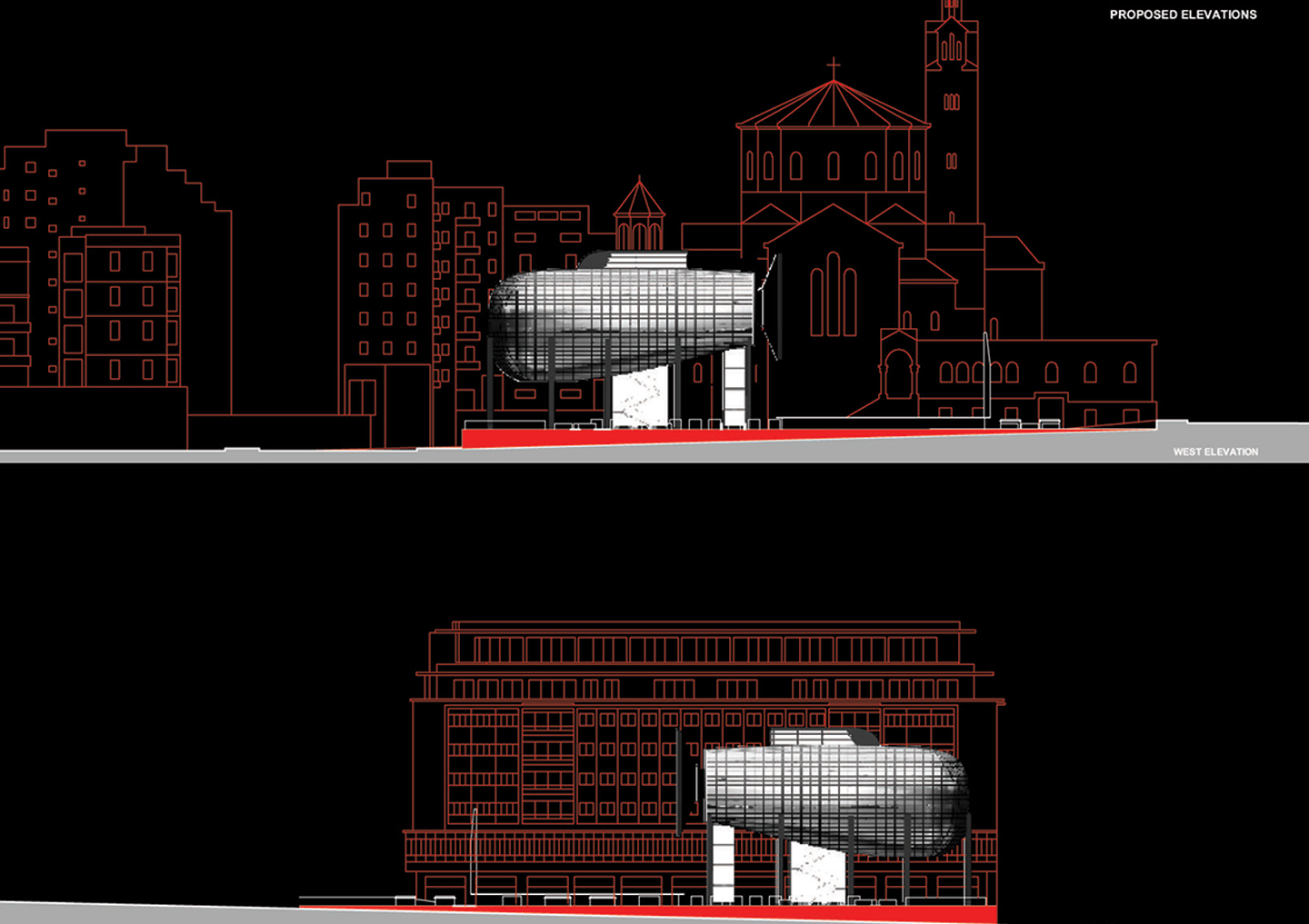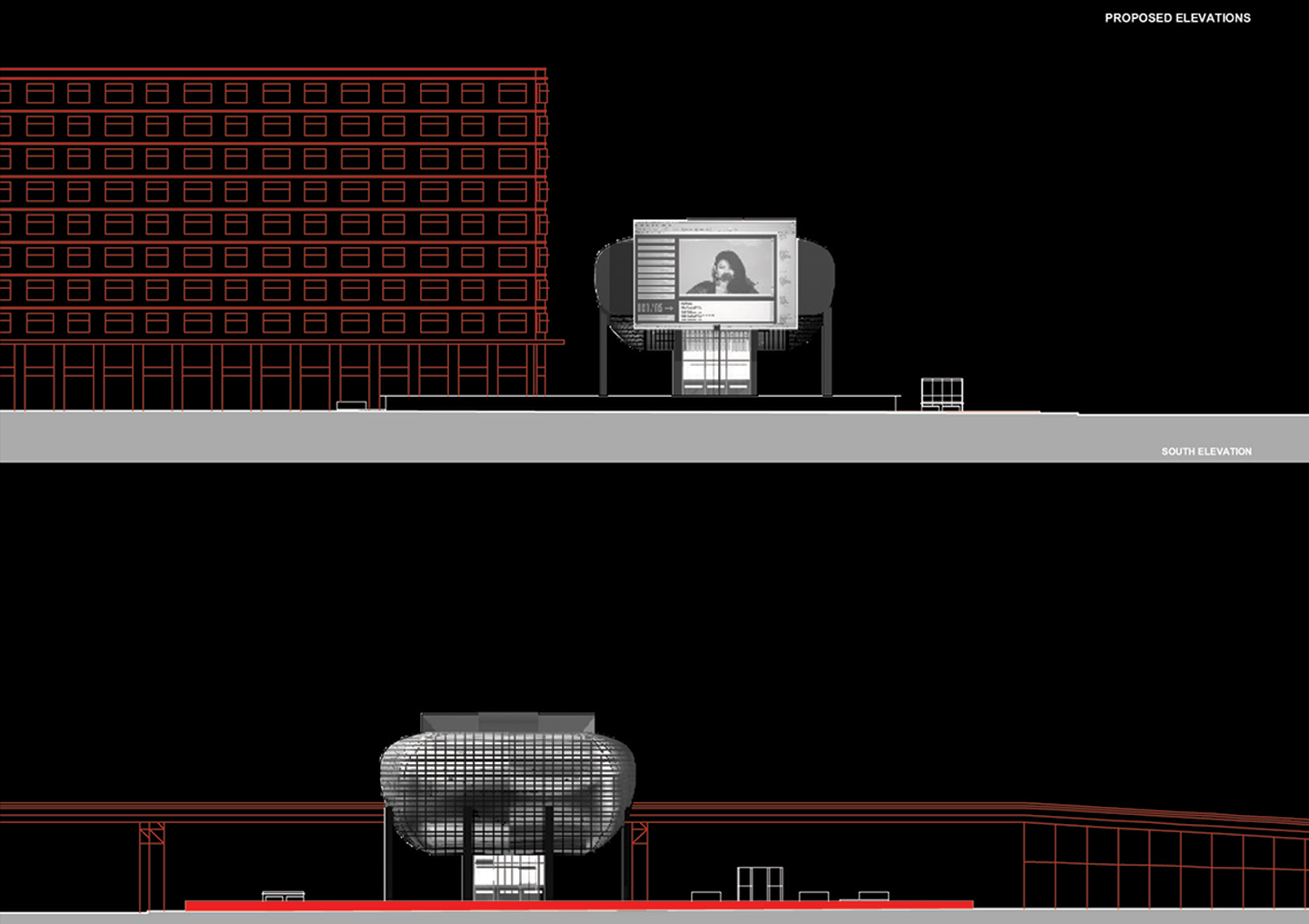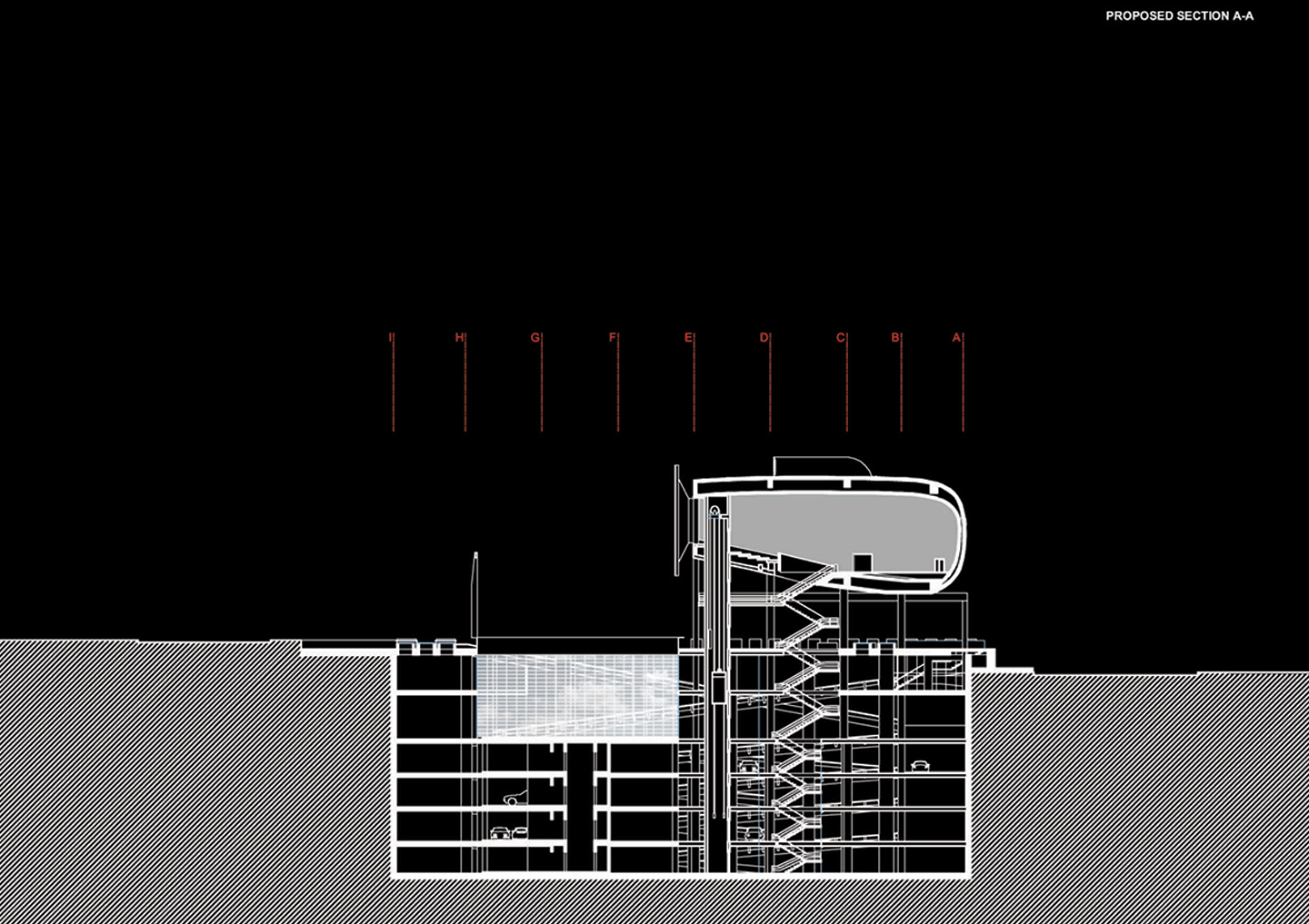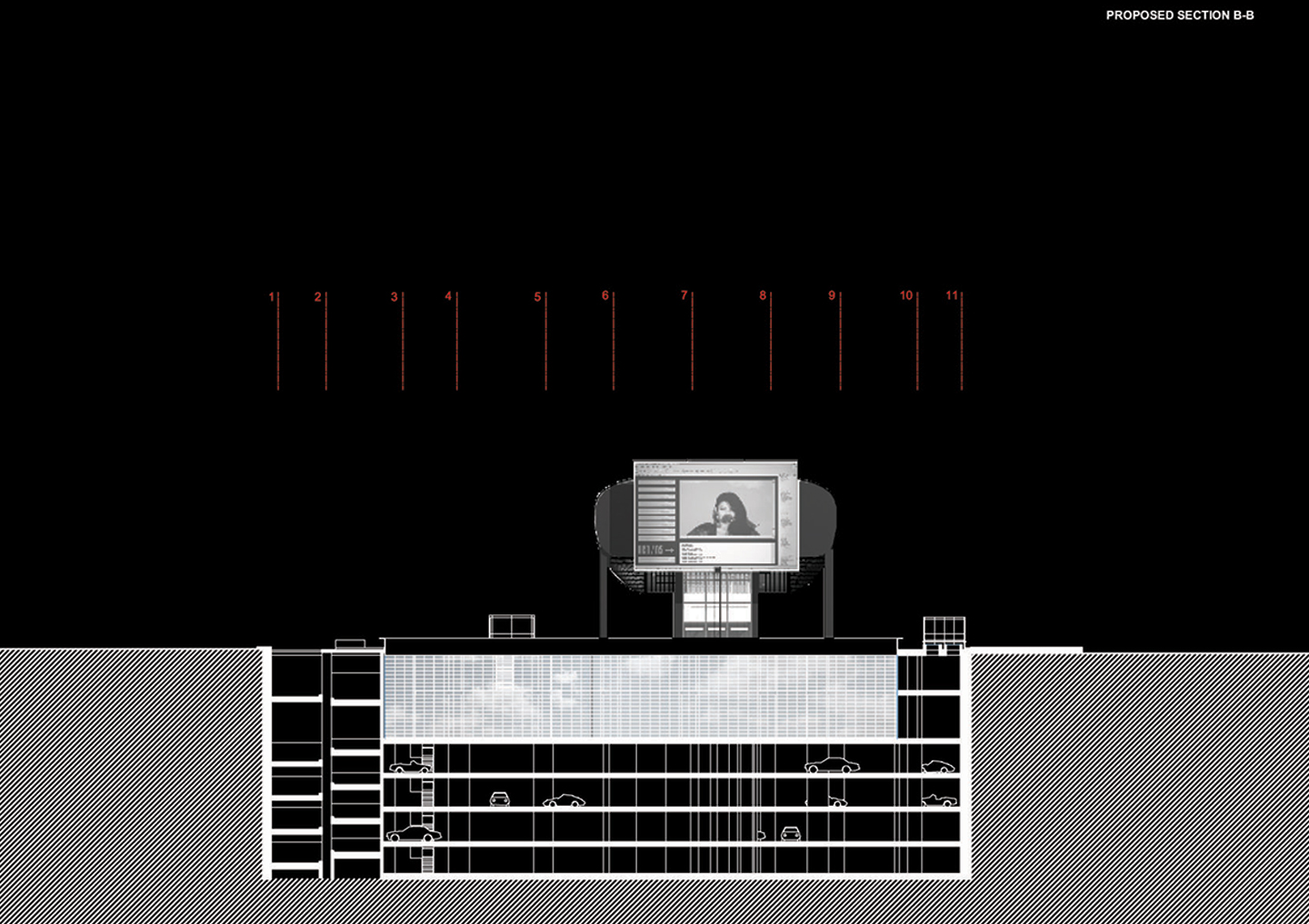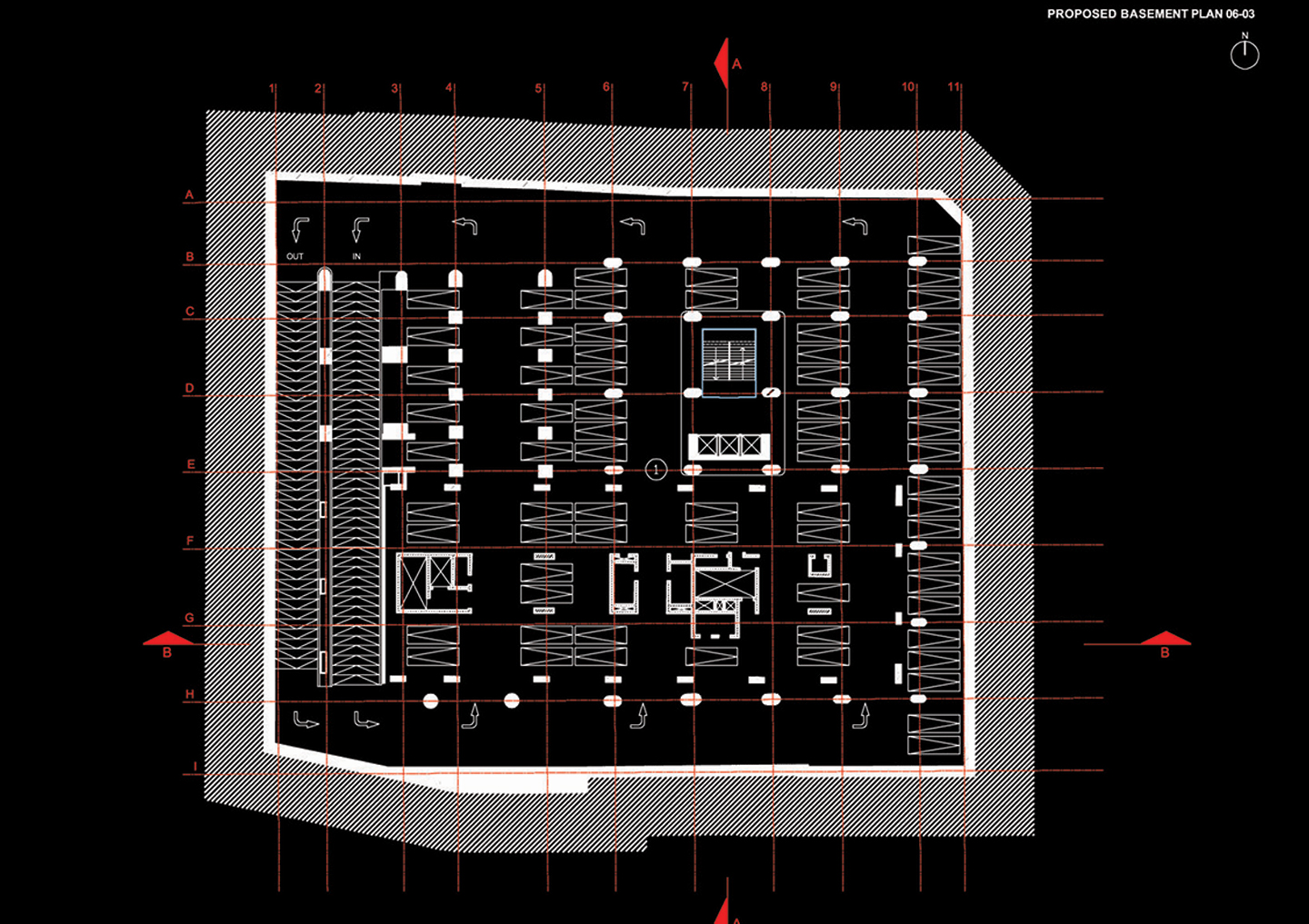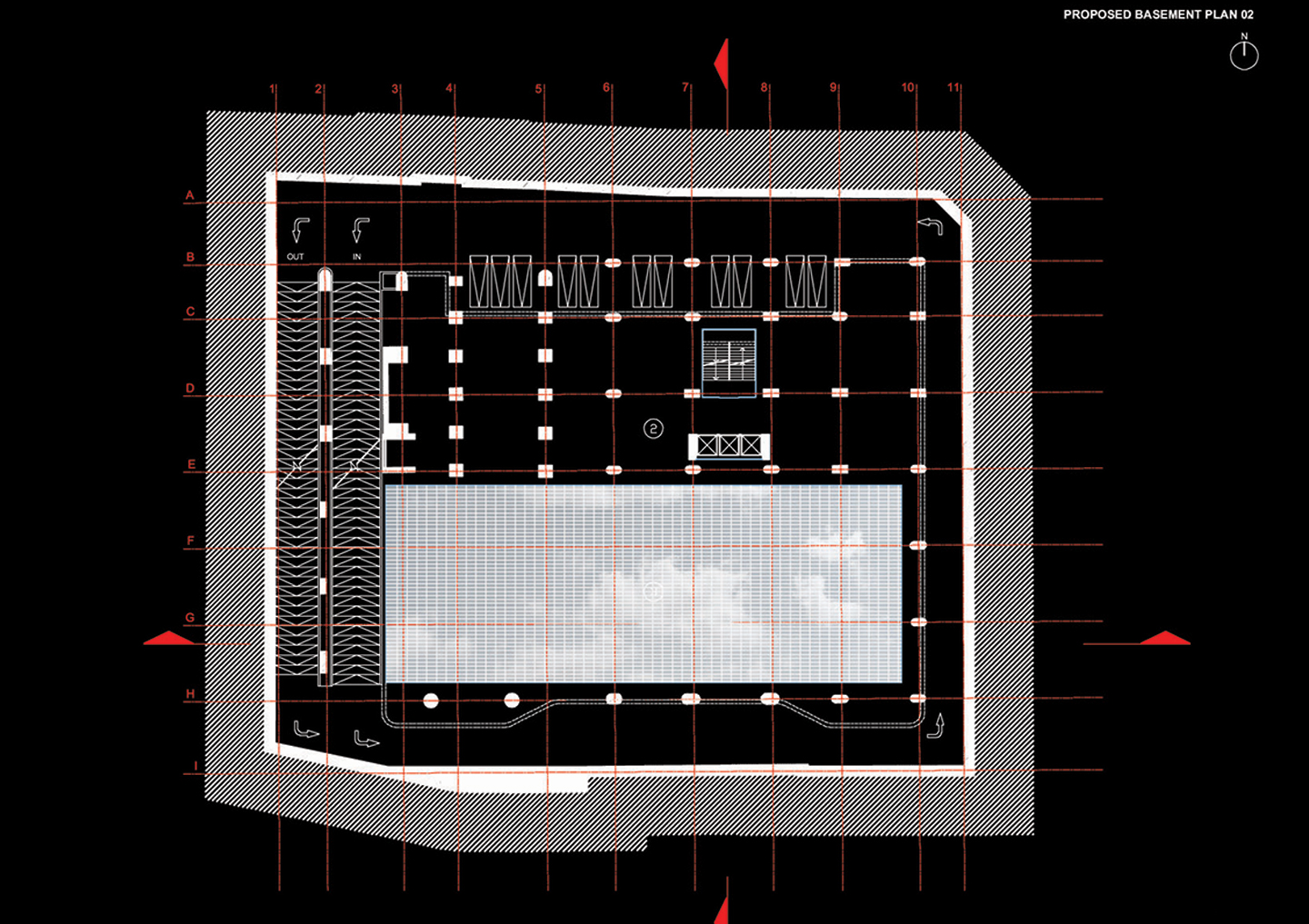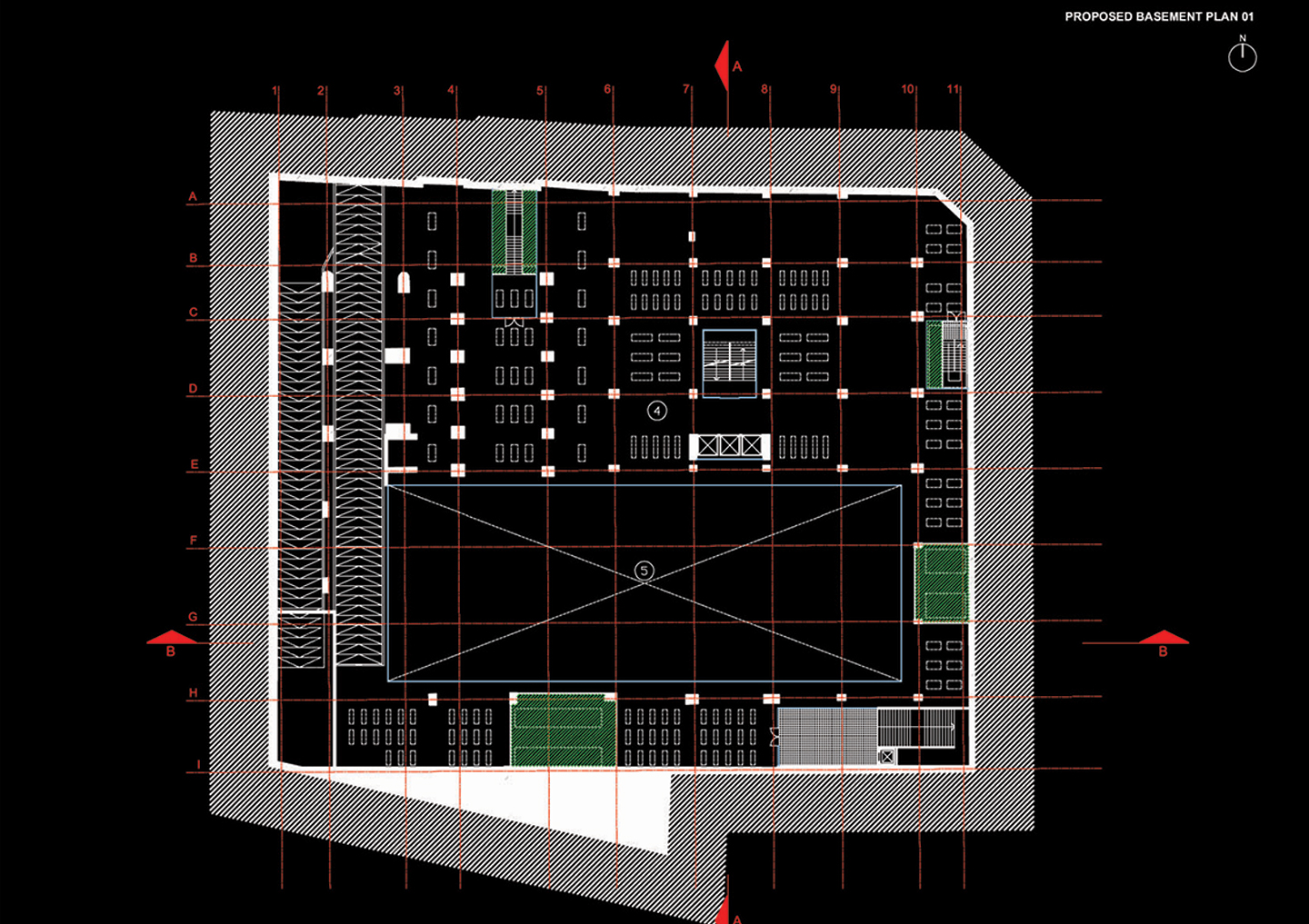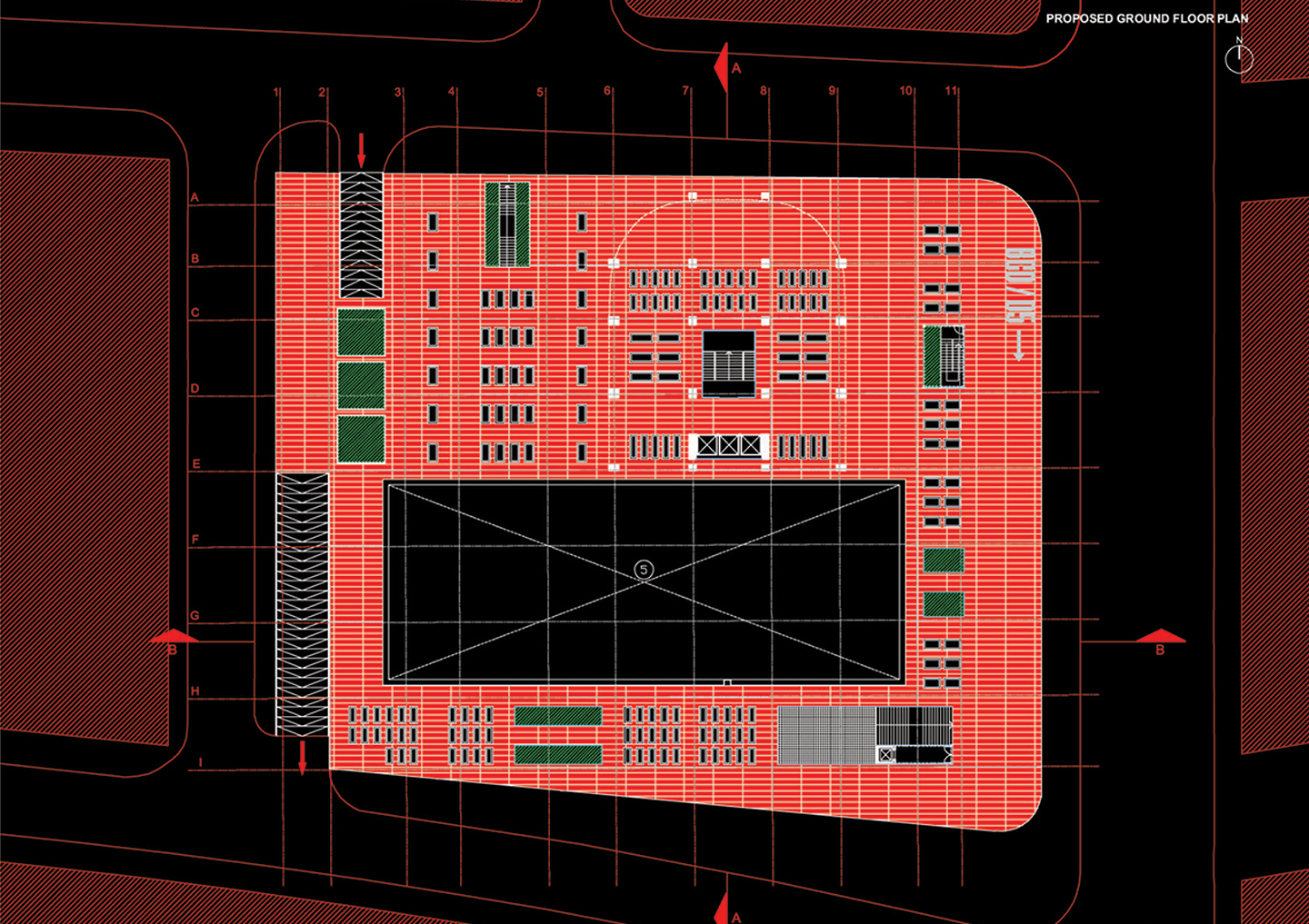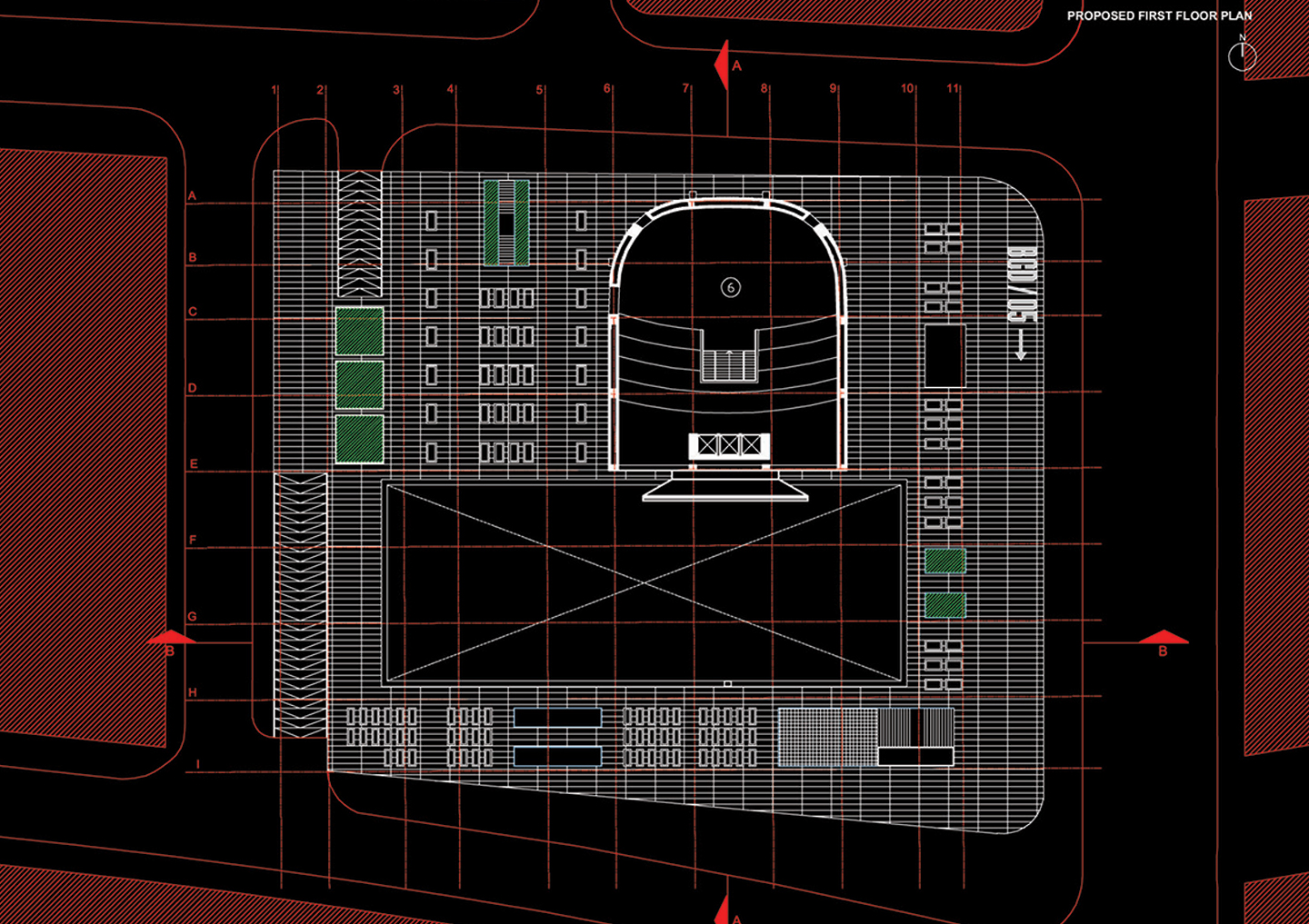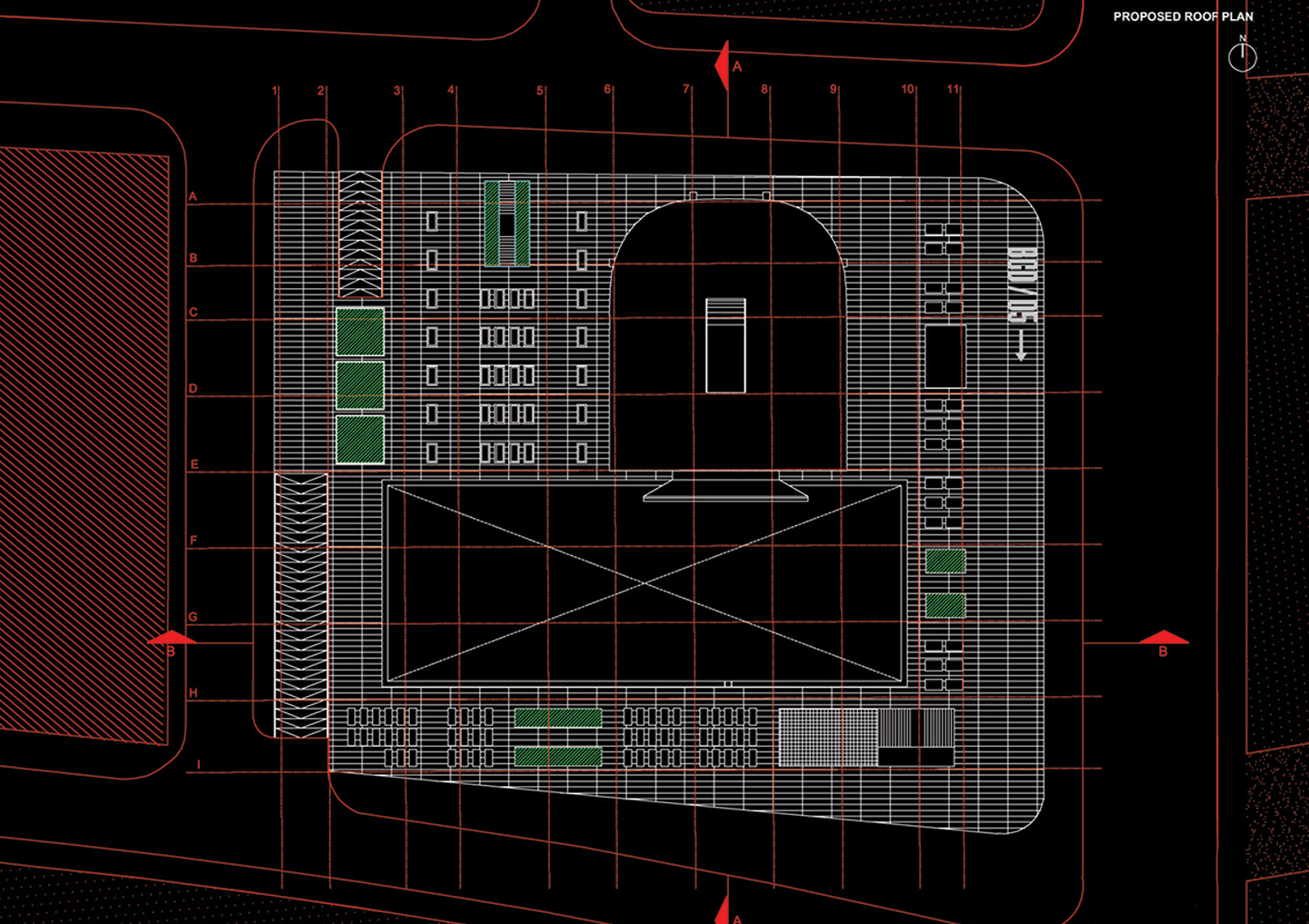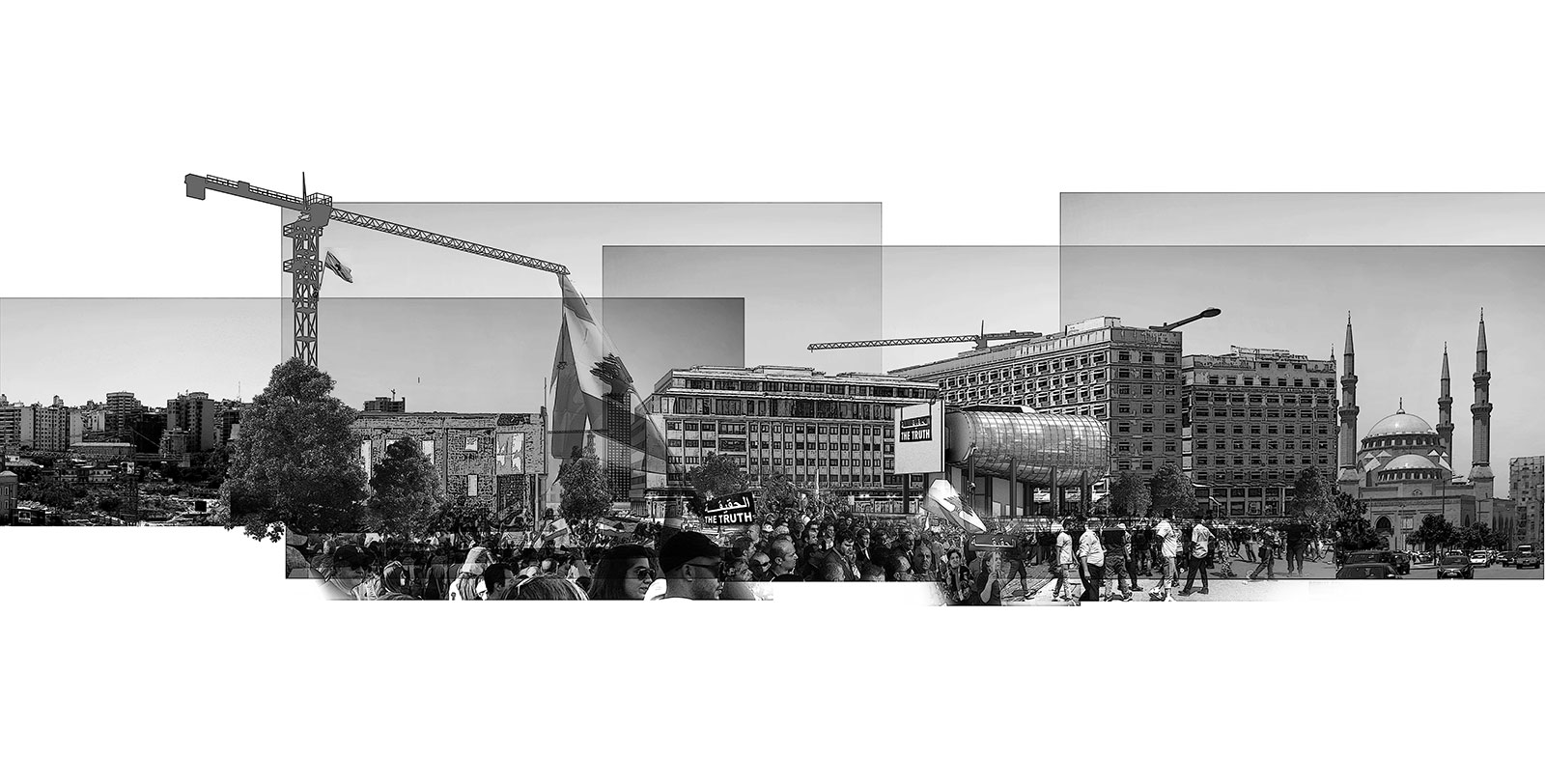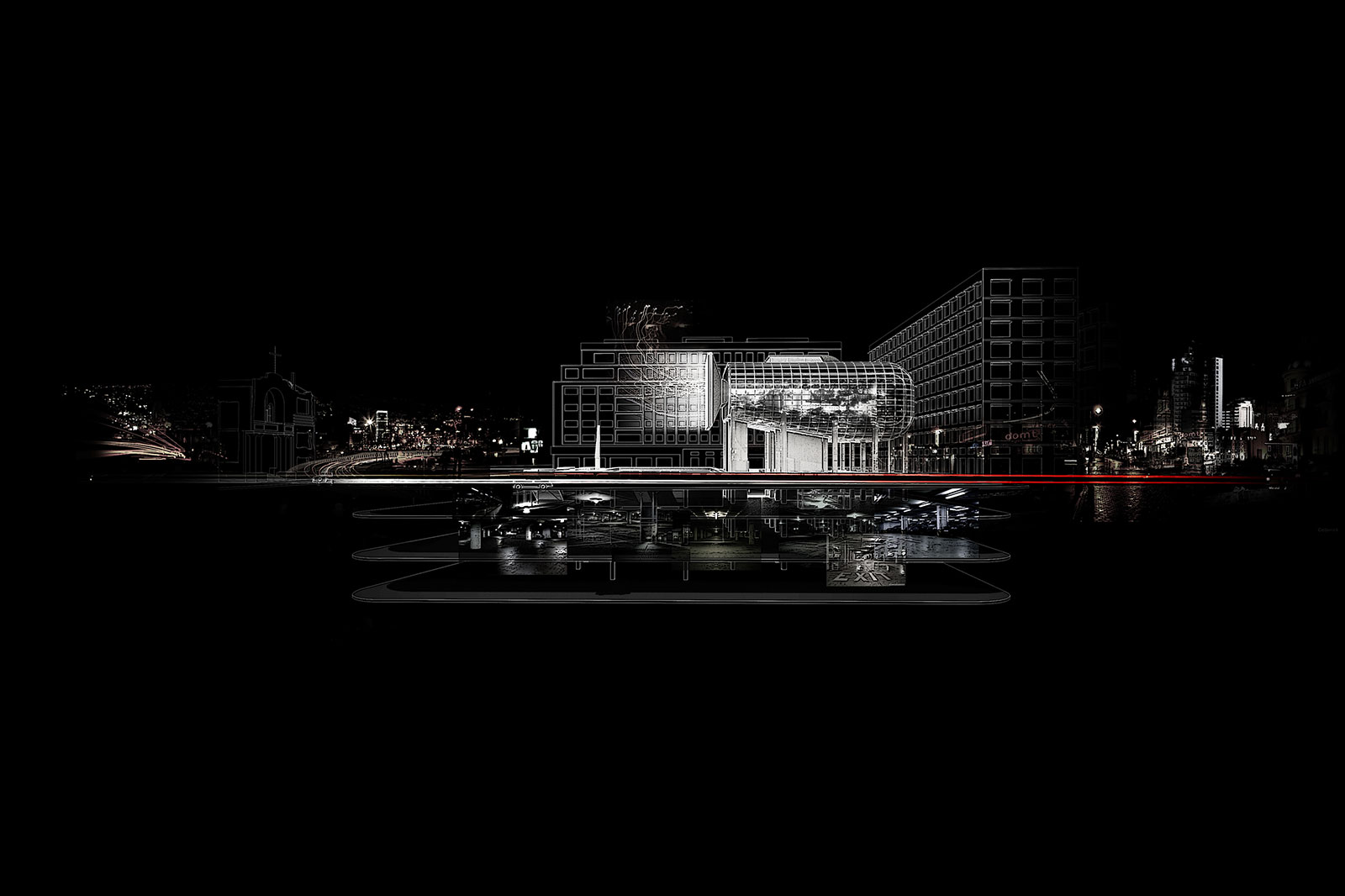
The former City Center sits on one of Beirut’s most prestigious lots. A visually conspicuous icon located across from the Fouad Chehab Avenue, Lot # 987 stands as one of Beirut Central District’s prominent façades onto the illustrious Martyr’s Square.
Beyond the perimeter fence we see today, the partial demolition of the complex has left the site of the City Center with far more than just the theater’s shell. Underneath and all around the theater lies a 6000-square-meter urban void. Amidst the congestion of the busy downtown area, the site should become a remedy for the cosmopolitan city absorbing the external fluctuating environment and complementing the neighboring action.
The Ground Interface
The first floor and the remains of the second floor slab will be demolished as we propose to clear the platform on which the theater stands. A process of excavation will partially reveal the exploitable lower slab. The “archeological” dig will be performed systematically according to the slab’s underlying structure to allow for natural light to penetrate through the ground floor and into the lower spaces. This line-up of horizontal “vitrines” will result in obstacles which transform the platform into a permeable interface, structured as a modern reinterpretation of the French garden. The ShellThe theater shell will be enveloped in a mosaic of mirrors. This treatment will not only cover the war-torn skin but also transform it into a reflective surface. This effect will lighten the volume of the theater as it should reflect distorted and fragmented images of its active surroundings.
The Electronic Garden
The 9-meter-deep void facing the theater remains from the interrupted construction of a new tower in the late 1990’s, to become another essential element in our intervention. The surface perimeter of the 9 meters of high space will extend to the floor as a continuous canvas to display video installation projections. The visitors will inhabit the gigantic image that will fill the void. The prosthesis, a 16.8-by-11.3-meter screen, will be placed onto the amputated southern facade of the theater shell. The proposed screen will project the cyber-interface of the new “city center”. Beyond its spectacular physical exposure in Downtown Beirut, the new city center will also be a major electronic portal monitored along a network of points constituting an alternative journey through the World Wide Web. This network of electronic space will feature new types of exhibitions, performances, concerts and interactive events all accessible via the city center’s internet portal. This alternative site could potentially become a highly visited address and an important meeting point that will link the physical city to the virtual community. Building interventions and instruments are being developed around such types of spaces. The planning of the edifice will not only be organized according to a physical perception of the space but it will also be developed around the sequential frames and the logic of the new electronic space.
The central portal of the digital site can be perceived as an interactive information desk highlighting the content of the programs. The real-time interactive transmission of more particular public events, like concerts or exhibitions, could take place in following pages along a series of paths accessible from the central page. The over-exposure of the site beyond its geographical situation should be a great benefit not only to its visitors, but also to all its tenants. Together they will form a community in which every individual member could be present along this network; taking advantage of a geographical address, a physical presence at the city center and an individual electronic address that could be part of this new electronic community.
In Progress
This rehabilitation project should not be regarded as a total renovation. Due to the required flexibility of the program, the fixed elements of the project are its infrastructure. Autonomous elements generated by potential and future operators will gradually inhabit the proposed open surfaces. The contemporary city is represented in terms of growth. The project has a symbolic role of demonstrating that urbanity lies in its process of making and remaking the city.





